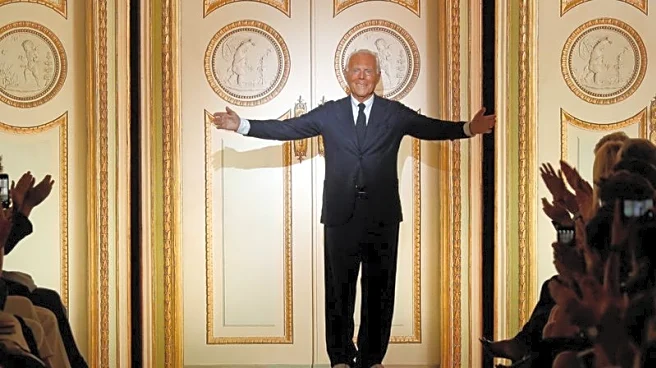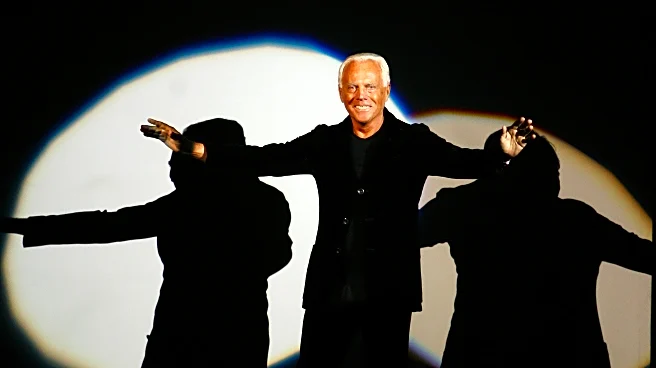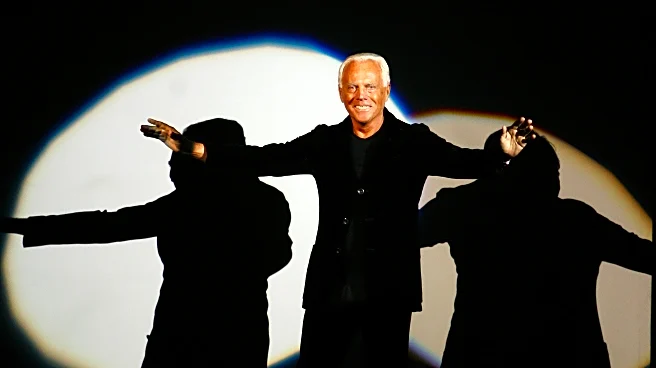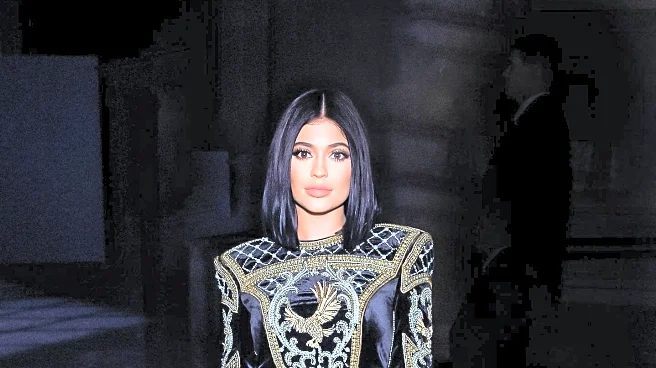What's Happening?
Giorgio Armani, the renowned Italian fashion designer, passed away at the age of 91 in Milan. Armani was instrumental in transforming Hollywood's red carpet fashion, turning it into a showcase for high fashion. His designs, characterized by effortless elegance and androgyny, became a staple for celebrities, influencing both menswear and women's clothing. Armani's relationship with Hollywood began in the 1980s, when he dressed Richard Gere in the film 'American Gigolo,' leading to a surge in his popularity. He opened a boutique on Rodeo Drive, cementing his status as Hollywood's couturier. Armani's approach to fashion on the red carpet has had lasting impacts, although not without criticism for making Hollywood fashion more uniform.
Why It's Important?
Armani's influence on Hollywood fashion has had significant implications for the fashion industry, particularly in the U.S. By integrating high fashion into the red carpet, he set a precedent that other designers followed, leading to a more sophisticated and polished image for celebrities. This shift has affected public perceptions of fashion and celebrity culture, making designer labels more accessible and desirable to the general public. Armani's legacy continues to impact fashion trends, with his emphasis on elegance and simplicity resonating in contemporary styles.
What's Next?
With Armani's passing, the fashion industry may see shifts in red carpet trends as new designers emerge to fill the void left by his influence. Hollywood's relationship with fashion could evolve, potentially returning to more individualized styles or continuing the trend of designer collaborations. The industry will watch closely to see how Armani's successors manage his brand and whether they maintain his legacy or introduce new directions.
Beyond the Headlines
Armani's impact extends beyond fashion, influencing cultural perceptions of gender and style. His androgynous designs challenged traditional gender norms, promoting a more fluid approach to fashion. This has contributed to broader societal shifts towards acceptance of diverse expressions of identity, making his work culturally significant.













